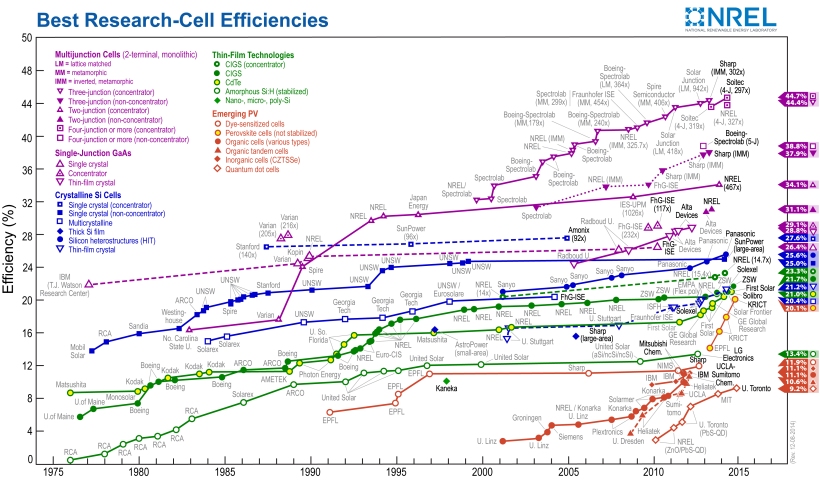The National Renewable Energy Lab (NREL) published the chart below in 2014 comparing the advancements in light-to-electricity conversion efficiencies in different types of solar cells.
Most interestingly, multi-junction cells (multi-layered cells where different materials absorb different wavelengths) have been shown to achieve 44.7% efficiency, a vast improvement over the conventional silicon panels with 20-25% efficiency. For reference, a typical pulverized coal-fired power plant achieves around 35% efficiency.
Further note the wide variety of materials and configurations of solar cells. Silicon has long had the advantage for use in solar cell materials as time has made it is cheap and easy to mass produce. Therefore, new technologies must improve on the conversion efficiency or on the cost of manufacturing and production.
One technology, perovskite solar cells, has made drastic increases in conversion ability in recent years (on the chart in red with yellow circles). These materials promise high conversion ability as well as increased flexibility in manufacturing, and therefore are a material to look out for.
While relying on solar cells for large quantities of electricity is expensive in the US today, the chart indicates that large advances are being made in recent years that could change this. In terms of capability, new technologies are well on their way to improving on the silicon solar cell. Many factors, such as increased demand or a heavier focus on manufacturing methods, can drive down costs. No technology is perfect, but solar cells must be part of the answer, and soon the technology may be much more accessible.
